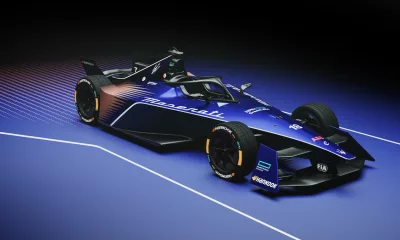If ever there were engines created for sheer shock, awe and anachrony – apart from the Bugatti W16 the VW Group’s W12 runs a close second.
The normalisation of the bizarre dictates that if something is repeated enough times, it becomes accepted no matter how outrageous. On the other hand, what is considered extreme today has often been well accepted in the immediate period that followed its gestation. Before time, evolution an eco-awareness damned it to an inevitable demise.
The subject at hand is the world’s only mass-produced W12 engine, Wolfsburg’s 6.0 WR12 48v, which this year celebrates its 21st birthday. The idea of a W configuration was first executed in 2001 in the mid-engined W12 concept car, that would later set a 24-hour endurance record (7 085 km at an average 295 km/h) at VW’s high-speed test oval in Nardò, Italy.

Less than four months later, on 23 February 2002 the W12 smashed its own record by this time travelling 7 739 km at an average speed of 323 km/h, thereby destroying any doubts over the engine’s veracity; or voraciousness.
The power plant, following the VW Group’s acquisition of Bentley in the late 1990s, was to be hand-built (then and now) at the Bentley factory in Crewe in Cheshire. It was green-lit for production and debuted in the 2003 Audi A8, developing 331 kW and 580 N.m in turboless guise, and propelled the two-tonne sedan to 100 km/h in 5,1 seconds while consuming a claimed 14,7 litres/100 km.
In the same year a boosted variant debuted in the Bentley Continental GT, which sported 412 kW and 650 N.m.

For those typographically inclined – although christened W12, the engine comprises two 15 degree-angle VR6 blocks (made from lighter, better heat dissipating aluminum silicon instead of steel) sharing a crank to form a quad-bank 72-degree vee; and is therefore technically a double-vee rather than the suggested W. The doubling of cylinders per bank blesses the W12 with considerably more compact dimensions and weight distribution than a V12 (or the Audi 4.2-litre V8 for that matter) while using the same number of overhead camshafts; the former of which were both key considerations during the design of the Continental GT.

Apart from the Audi A8, the W12 also performed duties in VW’s fabled-but-failed Phaeton Mercedes S-Class rival, the 2005-2010 Touareg and the mid-engined 2007 Golf GTI W12-650 (yes, VW really did that) concept. And as Audi dropped the W12 at the end of 2017, the W12 continues to live on in all three Bentley model line-ups today.
Compared to its 2003 granddad, at 485 kW and 900 N.m through relentless tinkering the W12 has evolved to produce 27 percent more power, 38 percent more torque and 28 percent lower emissions, which was greatly enabled by the Bentayga’s ability to shut off half its arsenal of cylinders.

Other numbers? The water pump, when running at full capacity, will fill a bath tub in 90 seconds. At 331km/h 4 000 litres of air passes through the radiator, which itself holds 18,9 litres (to complement the 12,5-litre oil capacity), while the exhaust temperature spikes to 900 degrees.
For lovers of large capacity engines, tone-deaf to the incessant calls of downsizing and increasing efficiency, may have enjoyed their dinosaur cake for more almost twenty years – the party will end this decade. As Bentley aims to be carbon-neutral offering an EV-only range by 2030; and producing only PHEVs or full EVs by 2026, the clock is now ticking for the W12; and its last appearance is likely to be in the limited-run 2023 Mulliner.

For those on a slightly lower budget with a W-shaped itch to scratch, VW also manufactured a four-litre, W8-powered Passat between 2001 and 2004 – effectively a chopped-in-half Bugatti Veyron engine – that put out 205kW and 370Nm. Available in a sedan or estate body style, and equipped with 4Motion AWD, the overpriced Passat failed to capture the public’s imagination and was killed off after selling just 11 000 units worldwide.
Which is considerably less than the 100 000 W12’s built since 2001. As the automotive industry capitulates under environmental pressure while persisting with formulaic and often flavourless platform sharing production, the VW Group’s W engine will undoubtedly go down in the millennium as one of its wackier chapters, and once gone the world will be a poorer place without it.
As Dr. Seuss once wrote, you have to be odd to be number one, and VW’s W engine provided 12 reasons why it was just that.
Words: Braam Peens
















